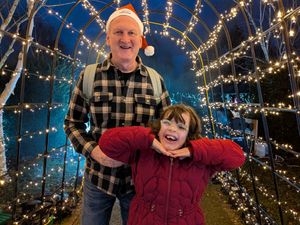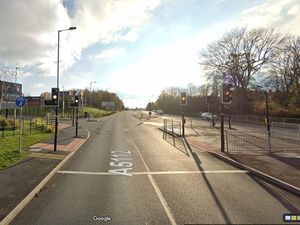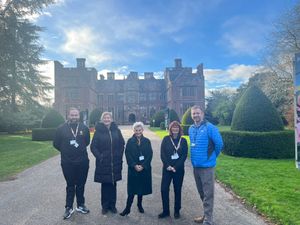Historic art collection from Shropshire stately home to go on sale
An historic collection of artwork – part of which was housed in a Shropshire stately home – is to go under the hammer next month.
The pieces, from the private collection of the 3rd Earl of Liverpool, Charles Cecil Cope Jenkinson, were once housed in the family seats of Pitchford Hall, to the south of Shrewsbury, and Buxted Park, East Sussex
The sale, being handled by Chorley's auctioneers, offers what is described as an "extraordinary collection".
Titled 'A Political Inheritance, Contents of a Cotswold Country House', the auction is set to take place on April 23.
Chorley's said it "comprises a quintessential English collection of family portraits with impeccable provenance, alongside Georgian furniture, porcelain, silver and enamel boxes".
Jenkinson, who was born in 1784, and died in 1851, was the younger son of Charles Jenkinson, the 1st Earl of Liverpool.
The 1st Earl held various political posts for a period of forty years, was a confidante of George II and was one of the architects of the Stamp Act that led to the Boston Tea Party and ultimately American independence.
The 1st Earl’s son from his first marriage, Robert Banks Jenkinson (1770-1828) became one of the longest serving prime ministers of the United Kingdom between 1812 and 1827.
He presided over the final years of the Napoleonic wars and Napoleon’s ultimate defeat.
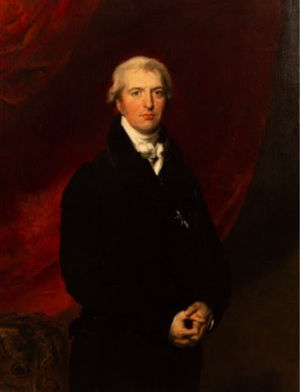
Robert Banks Jenkinson’s portrait by Sir Thomas Lawrence (1769-1830) hangs in the Waterloo Room at Windsor Castle and a version of the portrait is offered in the sale – as Circle of Sir Thomas Lawrence. It portrays him in a black coat, bearing the Ribbon and Star of the Order of the Garter, in front of a dramatic crimson curtain.
It carries an estimate of £6,000 to £10,000.
On Robert Banks Jenkinson’s death in 1828 Charles Cecil Jenkinson succeeded him as the 3rd Earl of Liverpool.
By this time he had already inherited Pitchford Hall from a cousin in 1807, and married Julia Evelyn Medley Shuckburgh-Evelyn (1790-1814), whose array of middle names are a tribute to the families of Medley and Evelyn, from whom she inherited the Buxted and Felbridge estates on the Surrey and Sussex border.
The sale therefore includes portraits of the ancient families of Evelyn, Medley and Shuckburgh, as well as the Jenkinsons and are a rare record of an extended 18th Century family. The portraits have remained in the family until this day and this therefore, is the first time they have appeared on the open market.
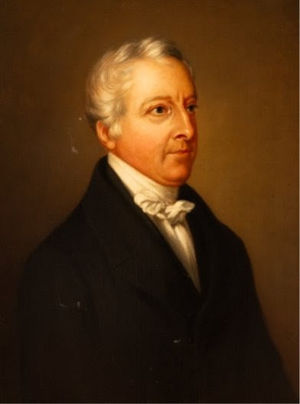
Commenting on the collection, Thomas Jennerfust, director at Chorley’s, said: “It is unusual to find such an extensive group of related portraits. These paintings have remained in the same family since they were commissioned and are therefore truly fresh to the market.”
The highlights include several portraits by George Romney (1734-1802), perhaps the most fashionable portraitist of his day.
One depicts Sir George Augustus William Shuckburgh-Evelyn, 6th Bt. (1751-1804), whose abiding interest was in in astronomy.
As a result of his work in this area, one of the craters of the moon is named after him.
The portrait portrays him seated in a dark blue coat with a white cravat, holding a thermometer and with an armillary sphere in view. In oil on canvas, it carries an estimate of £6,000 to £8,000.
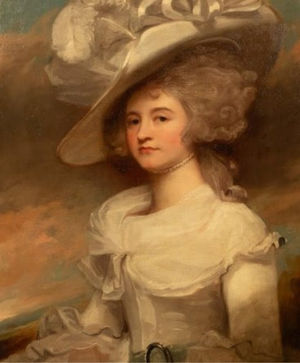
His wife Julia Annabelle, Lady Shuckburgh, (1756-1797), was also painted by Romney just after her marriage.
The portrait, capturing her in a white dress and large hat, is also offered in the sale at £20,000 to £30,000.
A group portrait of the 3rd Earl’s three daughters – Lady Catherine (1811-1877), Lady Selina (1812-1883) and Lady Louisa (1814- 1887), is also in the sale. They are captured in white gowns playing with a dog by the British artist George Henry Harlow (1787-1819) and carry an estimate of £8,000 to £12,000.
Royal gifts to the family will go under the hammer, such as a portrait of the 3rd Earl given to his eldest daughter, Lady Catherine Julia Harcourt née Jenkinson (1811-1877) by Queen Victoria a year after his death.
The Earl had been friends with Victoria as a young princess and later served as Lord Steward of the royal Household.
The Queen had visited Pitchford Hall and Buxted Park on several occasions and the gift of the portrait would have been a comfort to the Earls’ daughter, who she also knew well.

